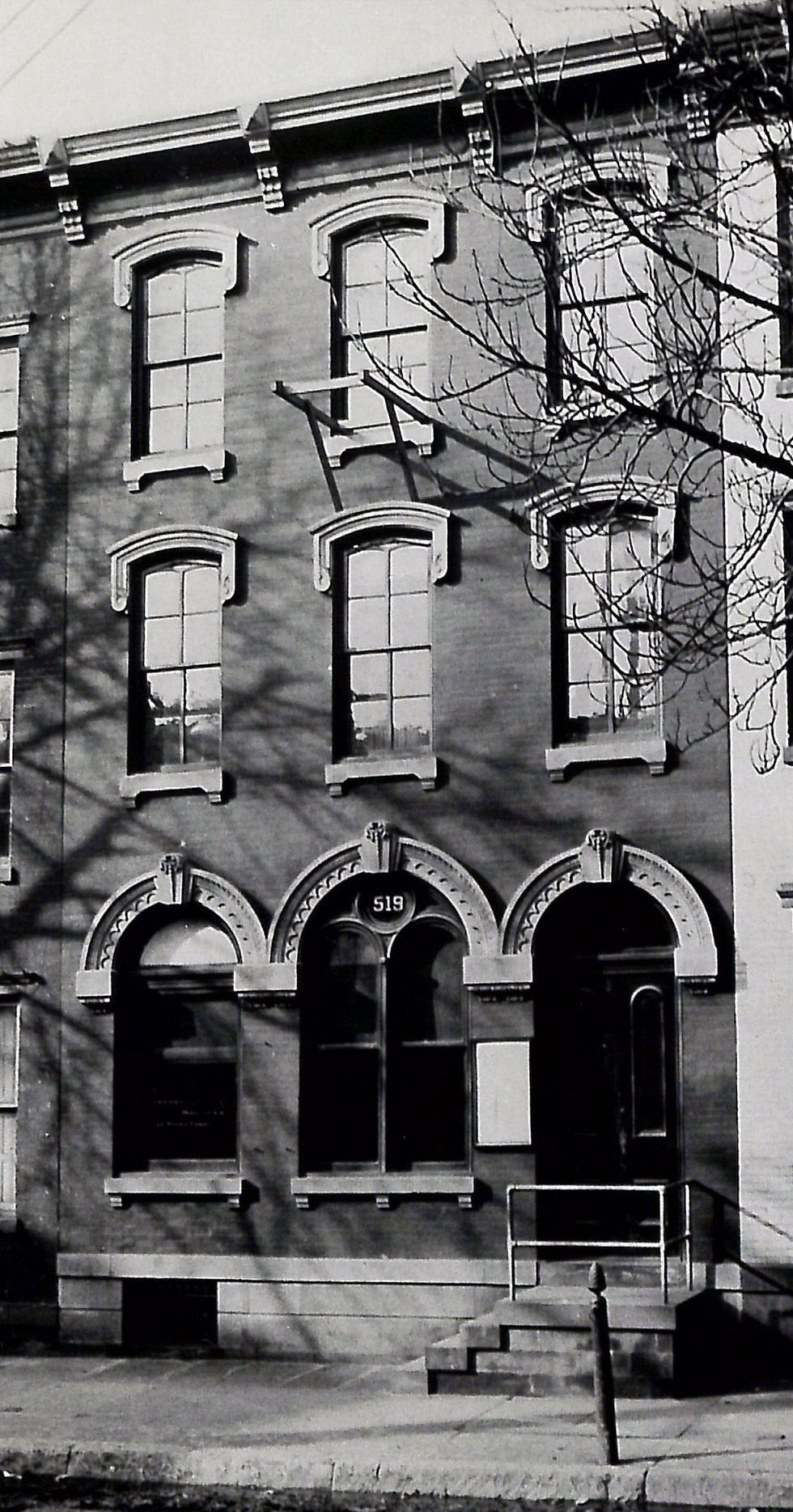William's story continues. For Part One, click here.

Besides mulberry trees, William also had a vineyard a peach orchard that contained over 2,100 trees. It was over five acres and surrounded by a high white fence. He called it his "Paradise" and it was considered one of the most beautiful spots on the outskirts of Reading. Because of its beauty and seclusion at that time, William had a small cabin built in the center of the orchard where he would spend a considerable amount of his leisure time. His friends considered it a treat when he invited them to spend the afternoon there.
In the springtime, when the trees were blossoming, large numbers of people would travel from Reading to witness the sight. Then, when the peaches were ripe, the orchard was a busy place. William's peaches were considered the finest sold in Reading. His cabin received numerous visitors at that time as well and the fragrance gave the location an extra charm. The "Description of the Borough of Reading", published in 1841 described the orchard as such: "This is truly a delightful spot. The air of seclusion which it possesses, the comforts of its shady walks and bowers, and its delicious fruit make it the favorite summer resort of the citizens of Reading."
After trying his hand with the silk business, William moved on to his next one venture: establishing a German-language newspaper in 1840, "Alt Berks, der Stern im Osten" (Old Berks, the Star of the East).

It seemed like a good business to get into since newspapers were flourishing in early nineteenth-century America. By the 1830s the United States had some 900 newspapers, about twice as many as Great Britain and had more newspaper readers, too. The 1840 U.S. census counted 1,631 newspapers; by 1850 the number was 2,526, with a total annual circulation of half a billion copies for a population of a little under 23.2 million people. Most of those newspapers were weeklies, but the growth in daily newspapers was even more striking. From just 24 in 1820, the number of daily newspapers grew to 138 in 1840 and to 254 in 1850. By mid-century the American newspaper industry was amazingly diverse in size and scope. Big city dailies had become major manufacturing enterprises, with highly capitalized printing plants, scores of employees, and circulations in the tens of thousands. Meanwhile, small town weeklies, with hand-operated presses, two or three employees, and circulations in the hundreds were thriving as well.
William was the editor, being fluent in "High German." However, he eventually sold the newspaper in 1844 after only four years. During that time, he lost nearly all of the $10,000 he had made from his mulberry trees and silk worms. Two copies of the newspaper are known to still exist in public files, one each at the Reading Library and the Berks History Center.
William then decided to follow in his father's footsteps. He began to study law and was admitted to the Berks County bar on 15 August 1846. He practiced law exclusively until 1851, when he was elected alderman, a position also held by his father. In running for the aldermanship, William was supported by both political parties, excepting in one or two instances. He would hold that position for 35 years.
On 12 September 1853, William married Sarah Maurer Long. They would have six children (five daughters and one son).

One of the hazards of the fruit business was when boys would leap over the fence and help themselves. One day in 1853, William was hearing a case in his office at 519 Court Street (later the first home of the Historical Society of Berks County in June 1904). In the midst of the testimony, a man came into the office and told William that some boys had broken down the fence, entered the orchard and hauled away a large number of peaches. In the process, they had also damaged a number of trees. William had finally had enough. "That does it," he exclaimed, I'm selling the place."
Jacob Livingood was the defense attorney in the case being heard at that moment. He turned to William and asked him, "What do you want for it?" William named his price and an hour later, Livingood was back with a client, James Jameson. Jameson bought the peach orchard and ran it for several years. However, he soon discovered what was called "deposits of durable clay" in the ground beneath the orchard. Jameson leased the land to Simon Kline, who established the first steam brickyard in the city. The brickyard would produce as many as 20,000 bricks per day.
William earned about $4,000 a year (about $120,000 today) with the combined occupations of lawyer, alderman and scrivener. He held the office of alderman until 1880 when he was compelled to relinquish it due to health issues.
William passed away shortly before midnight on Tuesday, 4 July 1882 at the age of 71. For the past three years he had suffered from a complication of diseases which had confined him to his home.
From his obituary in the 5 July 1882 edition of the Reading Eagle:
"Alderman Schoener was a man of varied talents and much general information, and he cheerfully and pleasantly gave advice to all who asked him....He was of a sociable disposition and when at home entertained in a handsome manner all the friends who called. He was a fluent conversationalist and spoke and read the English and German languages equally well. He was fond of music and played exceedingly well on the piano in his old age. When a young man he gave instruction in piano music and held the position of organist for 7 years in the 'Old White Presbyterian Church'...."
Thus ended a very busy life.
Comments